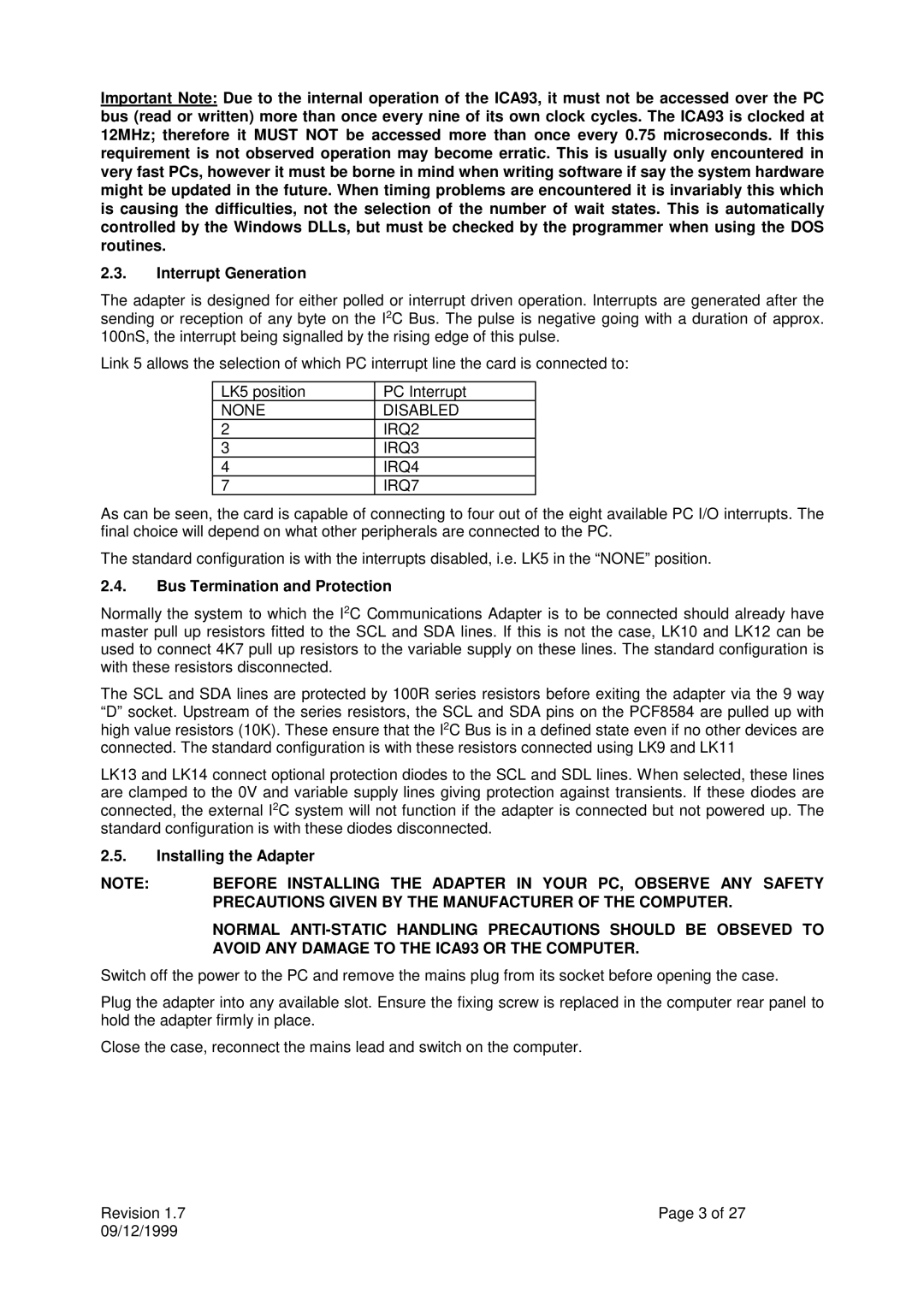Important Note: Due to the internal operation of the ICA93, it must not be accessed over the PC bus (read or written) more than once every nine of its own clock cycles. The ICA93 is clocked at 12MHz; therefore it MUST NOT be accessed more than once every 0.75 microseconds. If this requirement is not observed operation may become erratic. This is usually only encountered in very fast PCs, however it must be borne in mind when writing software if say the system hardware might be updated in the future. When timing problems are encountered it is invariably this which is causing the difficulties, not the selection of the number of wait states. This is automatically controlled by the Windows DLLs, but must be checked by the programmer when using the DOS routines.
2.3.Interrupt Generation
The adapter is designed for either polled or interrupt driven operation. Interrupts are generated after the sending or reception of any byte on the I2C Bus. The pulse is negative going with a duration of approx. 100nS, the interrupt being signalled by the rising edge of this pulse.
Link 5 allows the selection of which PC interrupt line the card is connected to:
LK5 position | PC Interrupt |
NONE | DISABLED |
2 | IRQ2 |
3 | IRQ3 |
4 | IRQ4 |
7 | IRQ7 |
As can be seen, the card is capable of connecting to four out of the eight available PC I/O interrupts. The final choice will depend on what other peripherals are connected to the PC.
The standard configuration is with the interrupts disabled, i.e. LK5 in the “NONE” position.
2.4.Bus Termination and Protection
Normally the system to which the I2C Communications Adapter is to be connected should already have master pull up resistors fitted to the SCL and SDA lines. If this is not the case, LK10 and LK12 can be used to connect 4K7 pull up resistors to the variable supply on these lines. The standard configuration is with these resistors disconnected.
The SCL and SDA lines are protected by 100R series resistors before exiting the adapter via the 9 way “D” socket. Upstream of the series resistors, the SCL and SDA pins on the PCF8584 are pulled up with high value resistors (10K). These ensure that the I2C Bus is in a defined state even if no other devices are connected. The standard configuration is with these resistors connected using LK9 and LK11
LK13 and LK14 connect optional protection diodes to the SCL and SDL lines. When selected, these lines are clamped to the 0V and variable supply lines giving protection against transients. If these diodes are connected, the external I2C system will not function if the adapter is connected but not powered up. The standard configuration is with these diodes disconnected.
2.5.Installing the Adapter
NOTE: | BEFORE INSTALLING THE ADAPTER IN YOUR PC, OBSERVE ANY SAFETY |
| PRECAUTIONS GIVEN BY THE MANUFACTURER OF THE COMPUTER. |
| NORMAL |
| AVOID ANY DAMAGE TO THE ICA93 OR THE COMPUTER. |
Switch off the power to the PC and remove the mains plug from its socket before opening the case.
Plug the adapter into any available slot. Ensure the fixing screw is replaced in the computer rear panel to hold the adapter firmly in place.
Close the case, reconnect the mains lead and switch on the computer.
Revision 1.7 | Page 3 of 27 |
09/12/1999 |
|
